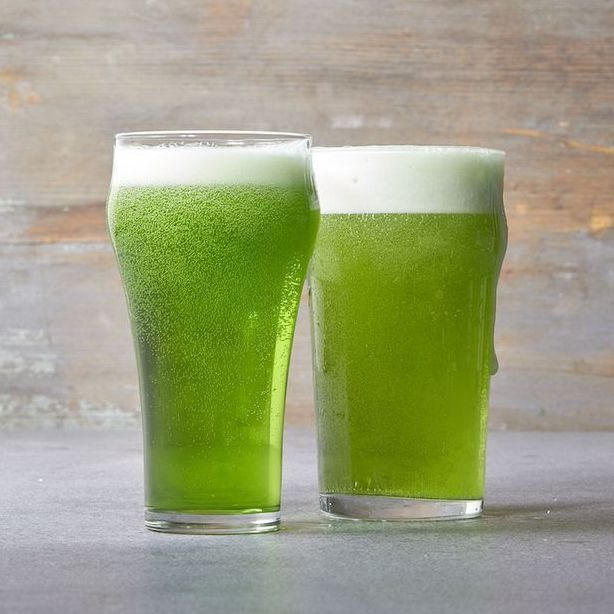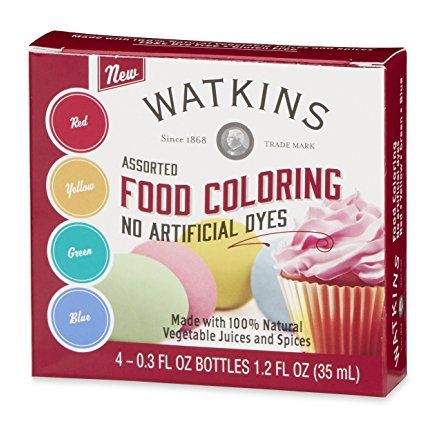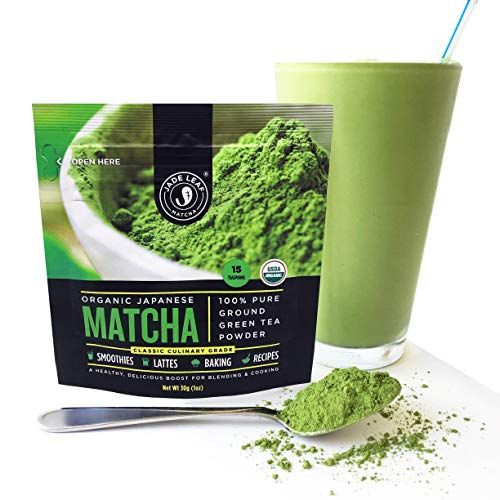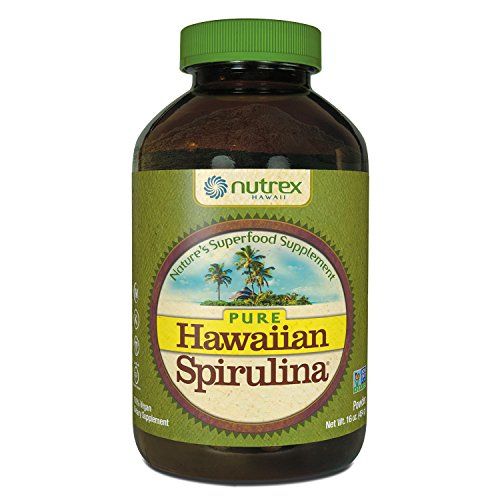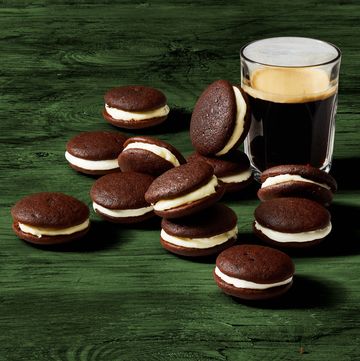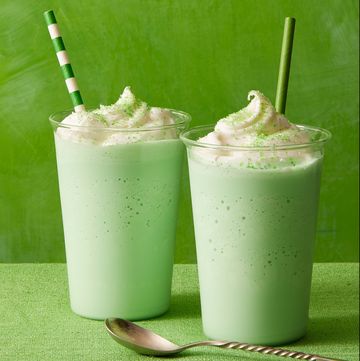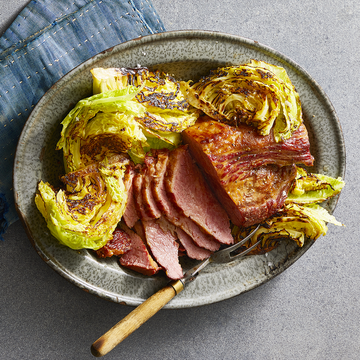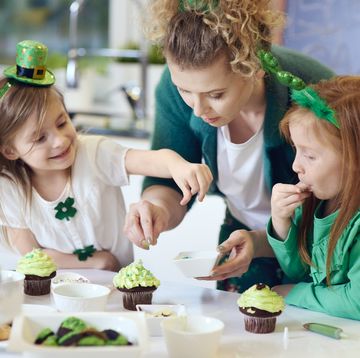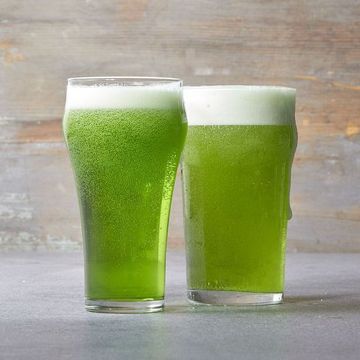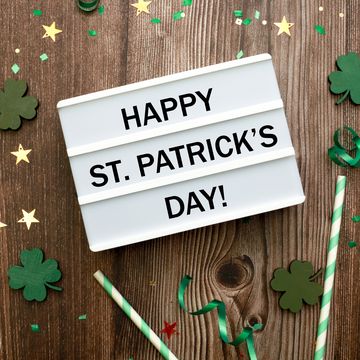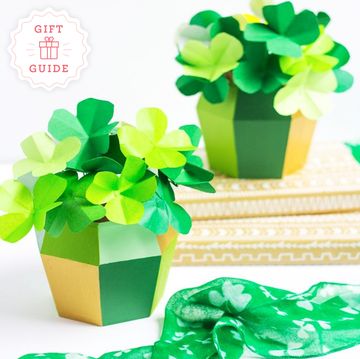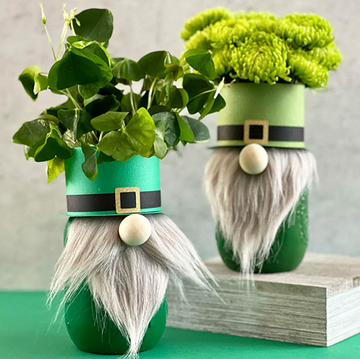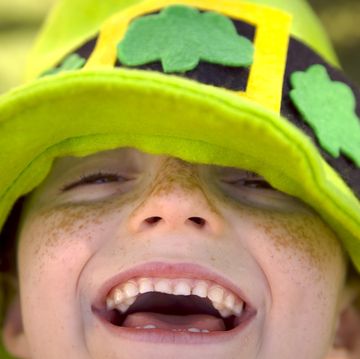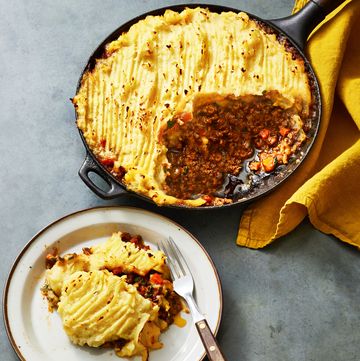It may not be traditional, but a pint of good 'ol green beer is a festive way to toast to St. Patrick's Day. There's nothing fancy to it — yes, it's just green food coloring and light beer — but it makes a shockingly fun sipper that's tasty, too. Plus, it's easy to make right at home.
While the Irish still stick to Guinness, Americans love a good color scheme and the practice of dyeing a plain pint green in honor of St. Paddy's is nothing new. Green beer has been written about as early as 1910 in a Spokane Press headline, "Green Beer Be Jabbers!" Many people, however, credit it to Professor Thomas H. Curtin who made the drink for his New York clubhouse in 1914. By the mid-1900s, the drink was a staple at St. Patrick's Day parties around the United States. As luck would have it, the drink didn't make its way to Ireland until 1985 — and it's still not very popular in the homeland.
If you ever hear your bartender talk about "green beer" in a negative way, he's probably not talking about the St.Paddy's version. Brewers use the term "green beer" to describe beer that's too young. It has a bad taste since it hasn't fully fermented and contains acetaldehyde.
If you're excited to deck your house in vibrant green St. Patrick's Day decorations and feast on an Irish dinner (corned beef and cabbage, anyone?) then green beer is a must. Because everything tastes luckier when colored green.
How do you make beer green?
Three words: green food dye. For a deep green, add two drops of green food coloring in one bottle of light-colored beer (any brand will do). If you want a lighter hue, stick to one drop. Keep in mind the more dye you add, the more likely it is that your beer will turn your mouth green. Start small!
How do you make green beer without food coloring?
If you're not a fan of artificial dyes, use wheatgrass, spirulina, or matcha to give your drink a green hue. Unlike green food dye, these all-natural options will alter the taste of your drink slightly, and may not be as vibrant as its artificial alternative. Here's the difference between the three options:
- Wheatgrass: Consider this option if you want a bright green drink and don't mind its grassy taste. To make, add one tablespoon of wheatgrass juice to the bottom of the glass before pouring in the light beer. Continue pouring in wheatgrass juice until it reaches the desired color.
- Spinach: This healthy green veg will give light beer a bright hue, and a slightly healthier taste. If you have a juicer (check out our favorite juicers if you're on the hunt to buy one), use it to extract the color from a bunch of spinach. Then add one tablespoon to the bottom of the glass and add your beer.
- Spirulina: If you don't mind this algae's metallic taste and want a hunter green beer, this is the perfect option. To make, put 1/2 teaspoon of spirulina powder into a bowl and add beer little by little. Whisk the mixture until the powder is completely dissolved.
- Matcha: By far the trendiest option, this powder doesn't significantly change the taste and turns beer an olive green color. To make, add 1 teaspoon of matcha powder to a bowl and add beer little by little. Whisk the mixture until the powder is completely dissolved.
- All-Natural Food Dyes: Companies like ColorKitchen have started to make all-natural food dyes using natural ingredients, like beet juice, spirulina, turmeric, and other natural vegetables and spices. To use this, place three drops at the bottom of your glass, then add your beer. These natural dyes aren't as vibrant, so you may need to add a few more drops.

